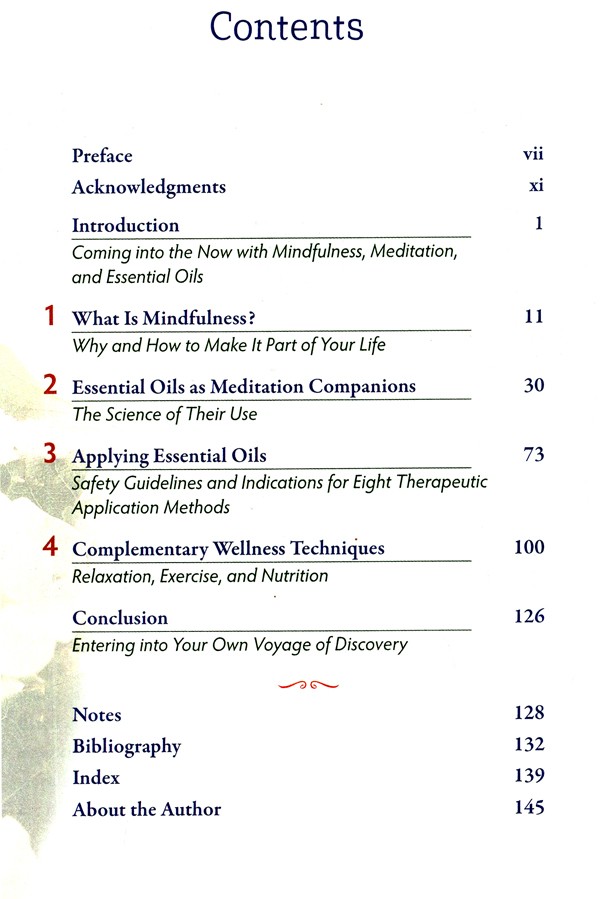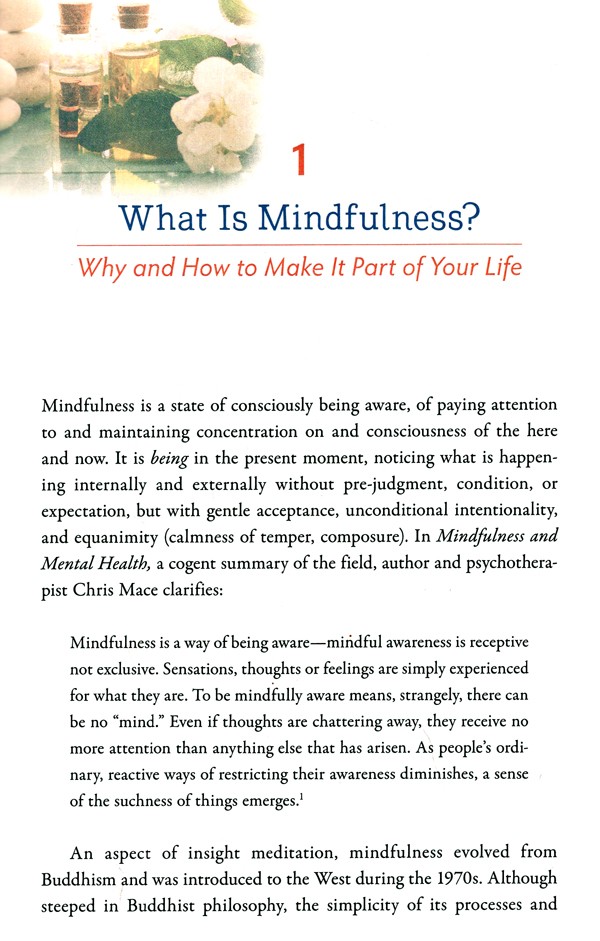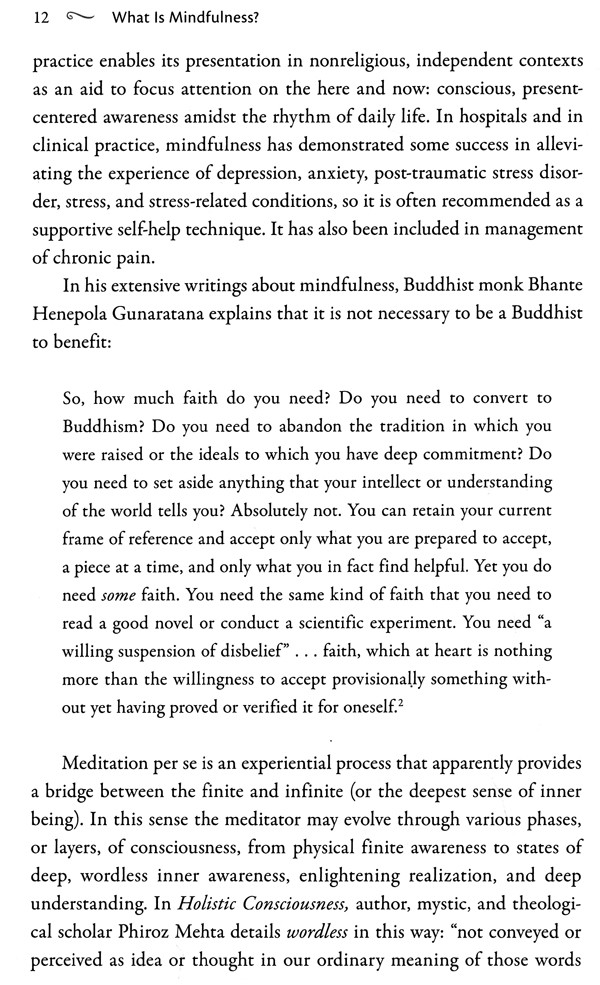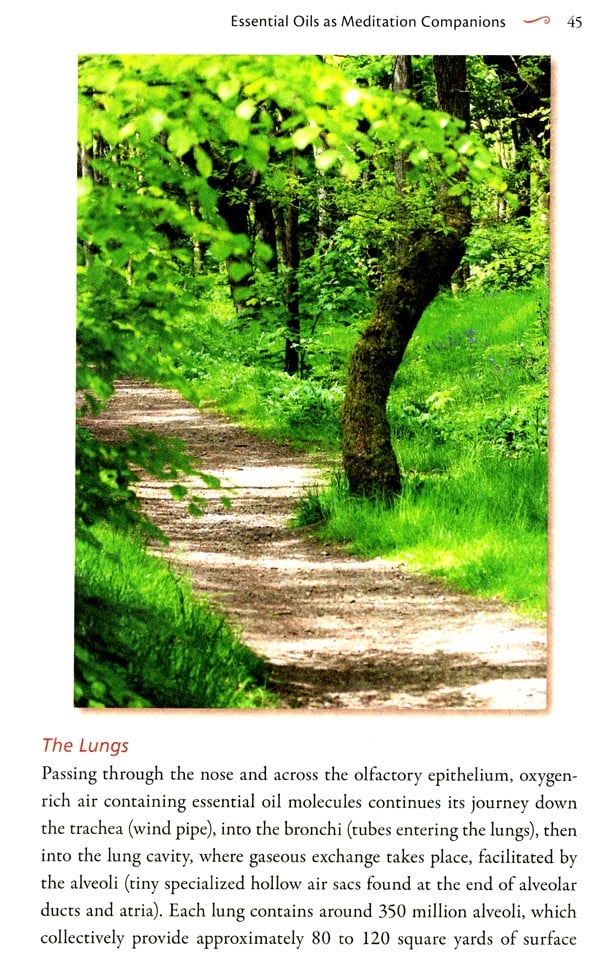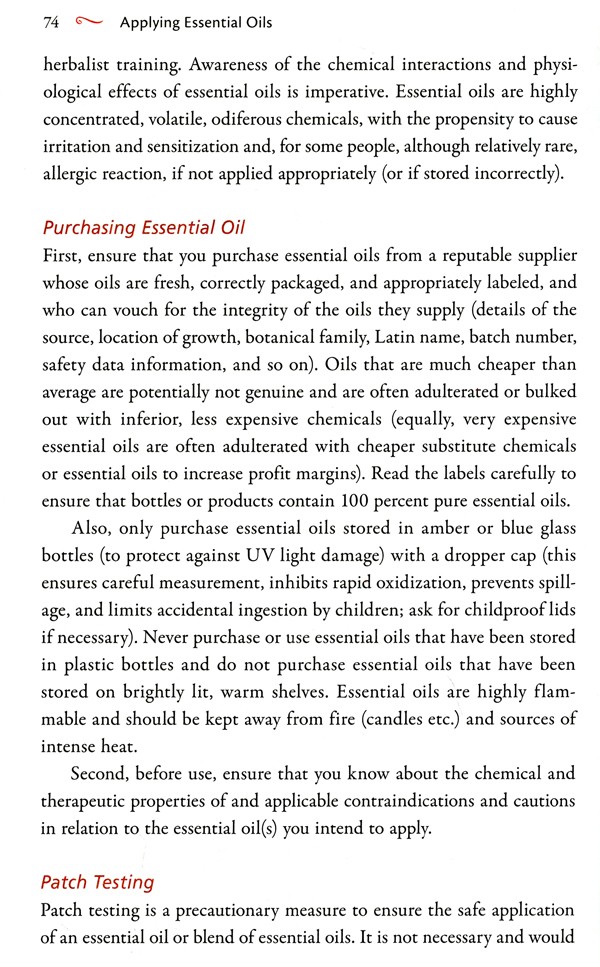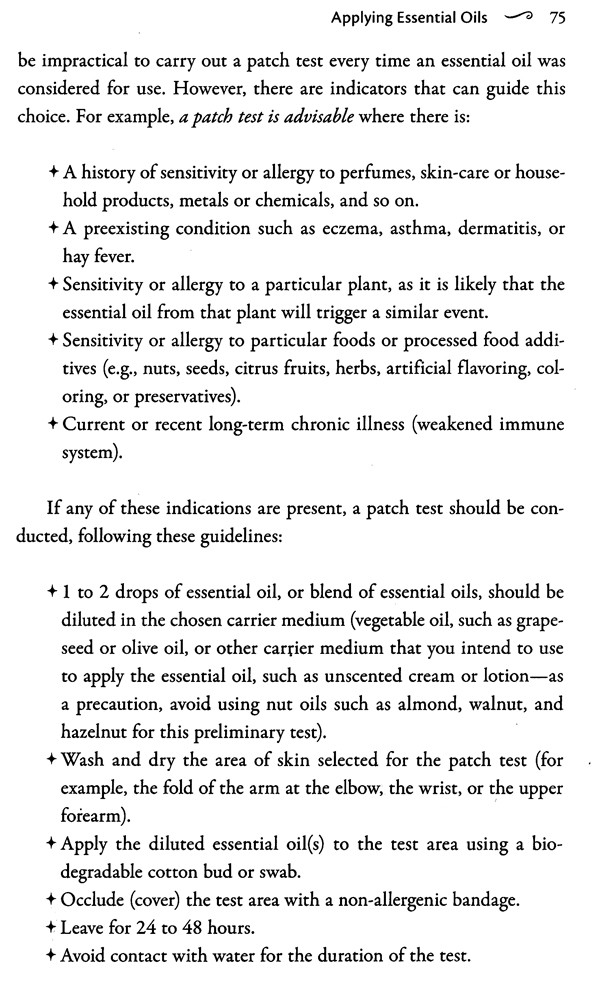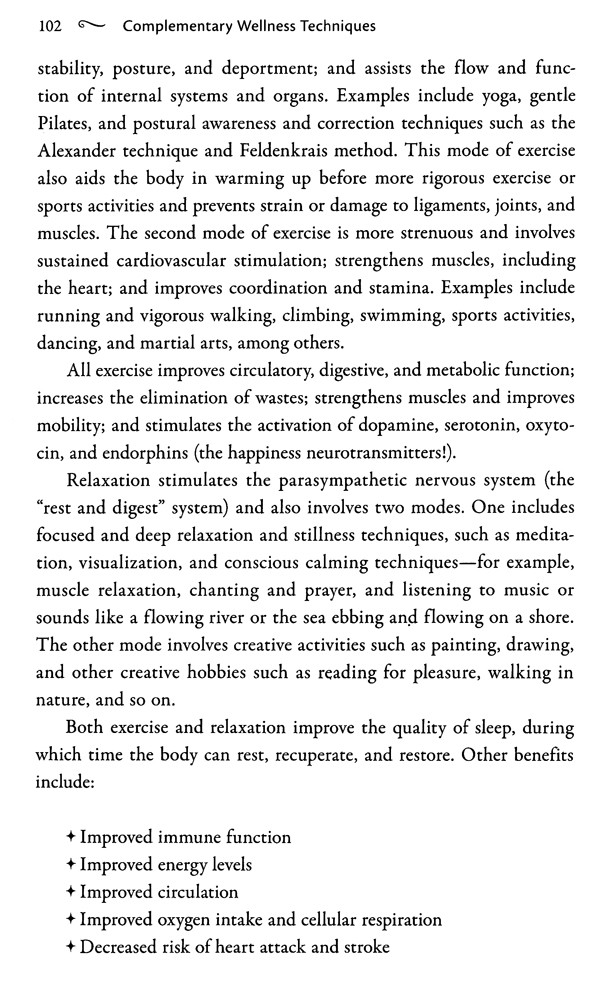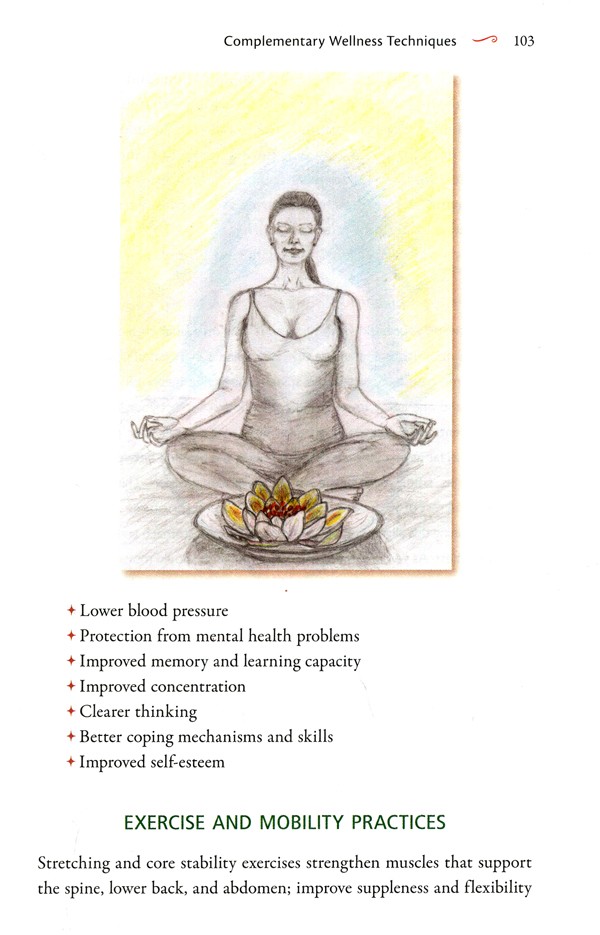
Essential Oils For Mindfulness and Meditation (Relax, Replenish, Rejuvenate)
Book Specification
| Item Code: | UAB944 |
| Author: | Heather Dawn Godfrey |
| Publisher: | Healing Arts Press |
| Language: | English |
| Edition: | 2018 |
| ISBN: | 9781620557624 |
| Pages: | 147 (Throughout Color Illustrations) |
| Cover: | PAPERBACK |
| Other Details | 9.00X6.00 inch |
| Weight | 280 gm |
Book Description
For millennia, the spiritual power of odor--such as from incense or frankincense--has been used to symbolize intention, stimulate awareness of our spiritual self, and accentuate rite and ritual. Drawing on this power, as well as their healing qualities, essential oils can provide the perfect complement to meditation or mindfulness practice.
Outlining the practice and benefits of meditation and mindfulness in combination with the use of essential oils, Heather Dawn Godfrey explains how these practices hone and sustain a conscious awareness of “being” in the present moment, focusing attention on what you are sensually experiencing and leaving no space for regrets, traumas, fears, anxiety, or anticipation. Providing the latest scientific research on the restorative, rehabilitative, and psycho-emotional healing effects of essential oils, she explains how the sensory experience of odors can immediately draw your attention to the present moment, trigger a specific state of consciousness, such as a deeper meditative state, or offer a way to regain composure quickly when dealing with life’s ups and downs. She shows how many essential oils naturally reduce stress and anxiety, promote a peaceful attitude, support concentration, regulate breathing, and stimulate serotonin and GABA pathways in the brain, making them ideal aids to mindfulness and meditation.
Explaining methods to incorporate essential oils into your practice, Godfrey introduces readers to the “Gem” essential oils--a group of oils specifically selected for attaining and maintaining a state of mindfulness, as well as a broad spectrum of therapeutic properties--and she provides an easy-to-follow chart to help you select the oil that is right for you. Offering a hands-on practical guide to integrating essential oils into mindful and meditative practice, the author shows how each of us has the ability to self-generate a calm, tranquil, and worry-free state of mind.
I was introduced to essential oils many years ago, when I worked for Robert Tisserand in London, during those early days when he first began developing his business, the Aromatic Oil Company, later Tisserand Aromatherapy. Then, I was a teenager, naive and idealistic, believing that I had so many years ahead, my life spreading out before me with endless possibility. So, when a friend beckoned me to join her in Corsica to work for a season, I went without hesitation, assuming I could simply pick up the threads when I was ready to return. Within a year, however, I was married and expecting my first child, my path decided and etched to a distant horizon.
One day, four beautiful children and some years later, I serendipitously found myself in a bookshop, waiting for a friend. Browsing the shelves in front of me, I noticed with pleasant surprise a book written by Robert, The Art of Aromatherapy. Intrigued, I flicked through the pages. Memories instantly flooded through me; the air I breathed seemed suddenly imbued with the scent of rose, ylang ylang, and chamomile. I recalled, as if only the day before, weighing dried chamomile and rose flowers and packing small brown bottles of essential oils with Robert and Jonathon ("Jack" and "Hans," as they were known then). I remembered the indulgent ambience the scents created-sweet, spicy, earthy, leafy, fruity, woody, floral, deeply rich, or playfully light-permeating every corner of the space, dispelling the dank background smell in the small old building we occupied then.
From that chance moment in the bookshop, revisiting the comfort, the familiarity, the tingle of excitement I felt, my inspiration was rekindled. My children were growing, and it was time to pick up the threads I had started to weave and complete the journey I had begun during those early years in London.
I earned a joint honors degree in counseling and complementary medicine at the University of Salford and master's certificates in integrated mindfulness and supervision of counseling and therapeutic relationships, going on to work in several capacities at the College of Health and Social Care at the University of Salford, including running the aromatherapy clinic for staff and students. I've also offered essential oil therapy in private practice for over 25 years.
I have had the good fortune to work with a range of clients (parents, grandparents, caregivers, teachers, researchers, managers, nurses, acupuncturists, counselors, and a variety of health-care professionals, among others) who have sought treatments for many different reasons. These include balancing physical and psycho-emotional well-being while working in demanding roles; managing stress or a stress-related condition, such as insomnia, mild depression, or anxiety. and support during challenging life events such as bereavement, job loss, or relationship breakdown, and, conversely, exciting events such as moving, changing jobs, or getting married. Sometimes it is for the simple but possibly most significant reason of all: to relax and enhance a sense of well-being.
Indeed, the inspiration to write this book evolved from observing my clients' responses to the scent of essential oils. I observed how the experience of aroma absorption and perception drew their attention and awareness into the moment. I also noticed how those moments were enriched as the scent permeated their psychic being and appeared to trigger a psycho-emotional response and effect. These responses were initially observed through a softening of facial expression and calmer breathing, after which clients reported their experience of increased energy, clearer thinking, and a sense of feeling relaxed and grounded. Their experiences have also been substantiated by measurable physiological responses in the nervous system.
Just as my connection to essential oils began many years ago, so did my relationship with meditation. When I learned to meditate, meditation was regarded as a fringe or hippie-type practice, encapsulated and epitomized by media images of the Beatles sitting with Maharishi Mahesh Yogi, developer of Transcendental Meditation. Meditation has not changed my destiny or my life's lessons, but it is an invaluable tool, consistently grounding my sense of reality, anchoring my psyche when I feel insecure, calming my racing mind, and uncluttering my perspective. I do not meditate every day, but whenever I do, the experience is unconditional, unfailing, always "just there," if I choose to notice, to focus my awareness.
MEDITATION AND MINDFULNESS
While there are various techniques and styles of meditation, all meditation appears to share the same universal objective: attainment of a state of inner calm and peace. The specific emphasis provided by the use of the term mindfulness or mindful awareness is that of defining the central aim as simply to be, to hone and sustain conscious awareness of being in the present moment.
Unconditional consciousness of the present moment naturally disables and dispels thoughts entrenched in the past or future. At the epicenter of the present moment, there is no place for past regrets, traumas, or disappointments; there is also no place for future fears, joyful anticipations, uncertainty, or expectations. They do not exist. In reality, we actually only ever exist in the present moment. This is reflected across many disciplines, as described by actor, activist, and proponent of Transcendental Meditation Russell Brand: I shall tell you now and for no extra charge that "living in the present" seems to be the key component across every scripture, self-help book and religious group I've encountered. To harmonize with life in each moment, not to make happiness contingent on any prospective condition. Not to be tormented by the past but to live in the reality of "now," all else being mental construct.'
Conscious of being in the immediacy of now, we are more awake to our experience of the world, the environment around us, and our immediate inner and outer senses. Sustaining present moment consciousness through mindfulness or meditation is like bringing color to a sepia picture, switching on a light, or pulling back a curtain from a window. Moment-centered consciousness allows us to clearly see, experience, and sensually observe the richness of what is actually here and now. This is "en-lightenment." Darkness is not the opposite of light but the absence of light; it therefore cannot exist where there is light. Objects blocking light create a shadow, and once they are removed, the shadow no longer exists.
Ruminating thoughts, memories of the past, concerns for the future, or present worries, such as about an unpaid bill, may insidiously move into the foreground of awareness, filling the frame of consciousness and creating shadows. Meditation enables the perceiver to reevaluate the pictures that arise, allowing awareness to encompass the whole scene unimpeded, not just the objects that have come to occupy center stage. Meditation/mindfulness is a proactive, conscious choice, a gentle process the perceiver may apply:
The emphasis on present moment awareness recognizes that this moment is the only moment in which we can act: past moments are only memories that we cannot change directly and future moments are only ideas. But with a realistic appraisal of thoughts, emotions and bodily sensations as they are perceived in the present moment we can move from a passive reactive mode of behavior to one that is infused with initiative and choice.
Meditation is a voluntary process that is safe and cost-effective. More significantly, it offers a tool that potentially supports individuals in maintaining their personal locus of control, without the unwelcome side effects often associated with taking antidepressant or sedative drugs (although these do, in some instances, play an important role as temporary support). Where drug medication is unavoidably necessary, the concurrent practice of meditation, in some circumstances, has been shown to reduce the quantity required and the duration of their prescription.
THE COMPLEMENTARY ROLE OF ESSENTIAL OILS
Essential oils have accompanied us like guardians and companions on our ever-evolving journey through time and life, appearing in the form of fumigants, incense, cleansers, antiseptics, antibiotics, bactericides, and preservatives, as well as psychosomatic, hedonistic perfumes, which have not only been worn to adorn and attract but also to protect, to symbolize intention, and to punctuate and accentuate rite and ritual.
Modern scientific investigation, equipment, and methodology have enabled greater insight into the practical mechanisms, properties, components, and chemistry of organic and inorganic matter, providing better understanding of the world around us. They have also taught us much about the physical body and its healthy function, as well as about viruses, bacteria, disease, and the significant role diet and lifestyle (as well as attitude) play in supporting and maintaining wellness. As holistic health and well-being resurges into the foreground, so too the mind-body-spirit connection is increasingly recognized and acknowledged as a significant feature of wellness.
**Contents and Sample Pages**
